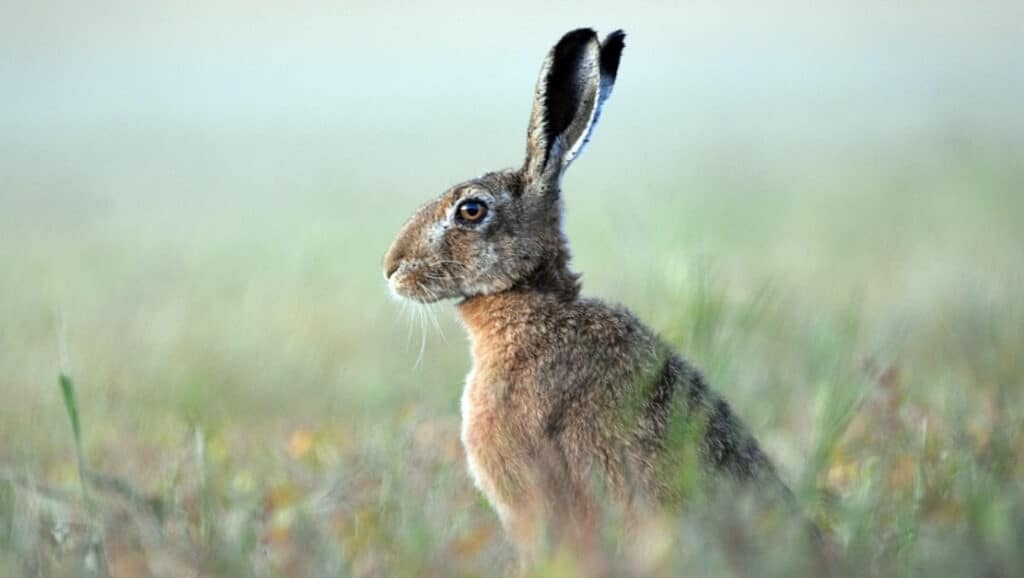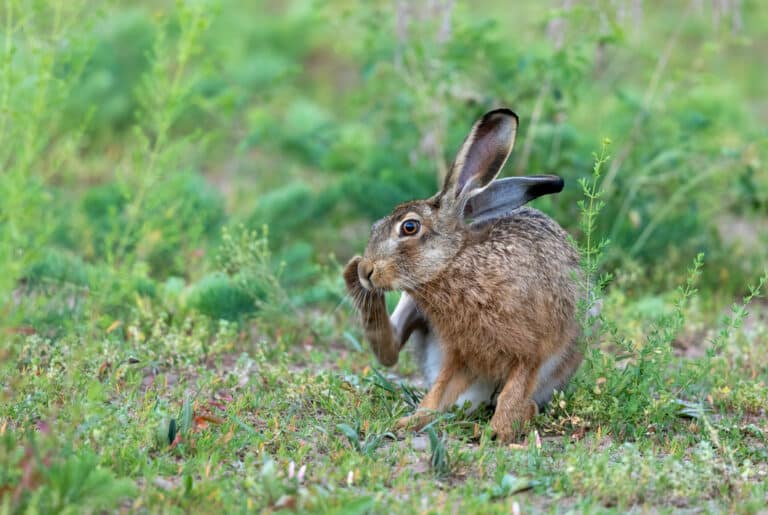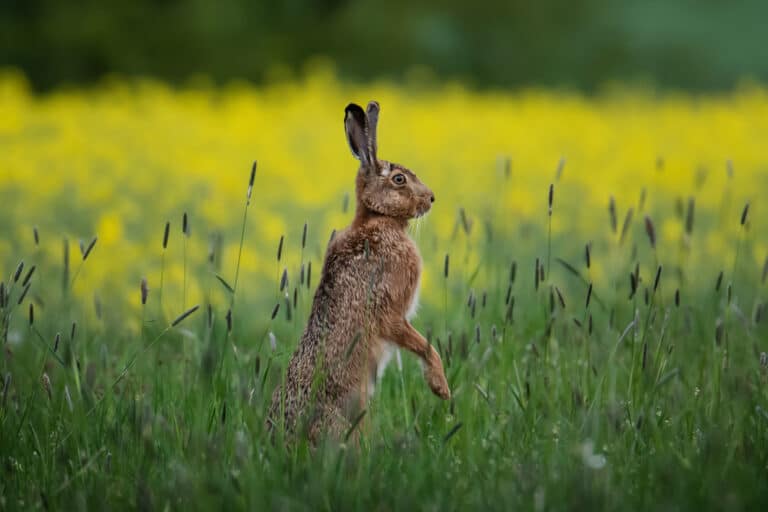Facts about the Brown Hare
Scientific name: Lepus europaeus
At a glance
- Introduced by the Romans, Brown Hares were listed as a priority species in the UK Biodiversity Action Plan in 1994.Once widespread in the UK, Beavers were over-hunted and became extinct here in the 16th century.
- In the early 19th century 4 million Brown Hares lived in Britain, today, there are fewer than 800,000.
- The species has minimal legal protection and in England and Wales can be shot throughout the year.

The Brown (or European) Hare, is native to Europe and parts of Asia – but not to the UK.
One of the largest of the forty hare species worldwide, the Brown Hare is adapted to temperate, open country preferring a mosaic of arable fields, grasses and hedgerows. which probably helped it take so readily to the British countryside when it was brought here by the Romans around 2000 years ago (analysis of bones excavated from sites in Hampshire and Hertfordshire suggests that Brown Hares and chickens were both introduced to Britain between the fifth and third centuries BCE. By contrast, Romans apparently brought rabbits to Britain during the first or second century A.D.).
Unlike rabbits, Brown Hares don’t dig burrows but shelter in ‘forms’, which are shallow depressions in the ground or grass. When they’re disturbed, they can be seen bounding across the fields, often in a zigzag pattern, at speeds up to 70 kmh/45 mph. Brown Hares are at their most visible in early spring when the breeding season encourages fighting or ‘boxing’ – not courtship or males fighting as long thought, but actually females rebuffing over-amorous males.

In the early nineteenth century 4 million Brown Hares lived in Britain. Today, there are fewer than 800,000. Like so many other British mammals, they have been hit hard by habitat loss, especially the degradation and development of arable land under agricultural intensification. Additionally 1,121 km2 of arable farmland (an area the size of Bedfordshire) have been lost to urban development in Great Britain since 1990.
As a result Brown Hares were listed as a priority species in the UK Biodiversity Action Plan in 1994. However, somewhat contradictorily the species has minimal legal protection because it is considered a ‘game species’ and in England can be shot throughout the year, including through their breeding season – a ridiculous situation that so far has been maintained as the government consistently bows to pressure from the agriculture and shooting lobbies.
Acclaimed naturalist and writer Michael McCarthy asked in The Independent “Must we shoot Britain’s mad March hares all the year round?” in March 2013.
In 2019, former agriculture minister George Eustice introduced a private member’s bill that would make it illegal to shoot hares from February to September (following the closed season in Scotland) saying that. “England and Wales are among the few remaining European countries that do not have a modern close season on shooting hares during their breeding season, which is a terrible oversight.”
In 2022 the proposal was withdrawn. As so often a small number of people with undue influence (gamekeeping) and an industry that has tipped the UK into one of the most nature depleted countries in the world (farming) gets to make life or death decisions about an animal that the rest of us has a deep affection for.
Hares do have protection from coursing and hunting though, through the Hunting Act 2004 which bans the hunting of wild mammals with hounds – largely because it would have been ridiculous to leave them out, and because landowners loathe coursing because it takes place on their land.
However, the law has never been much of an impediment to wildlife criminals and both hunting and coursing still takes place all too often.

Hare coursing
Hare coursing is the pursuit of hares with sighthounds (lurcher-type dogs) as opposed to the harriers, beagles or bassets involved in hare hunting. Coursers chase hares across the large, cropped flat fields typically found in Cambridgeshire, Lincolnshire and Norfolk in the autumn. Criminal gangs often film the events for later betting use. In hare coursing there are usually two hounds chasing the hare and bets are placed on which way the hare will turn and which of of the two dogs will be able to kill the hare quicker. A literal tug of war between the two dogs over the hare sometimes results, unsurprisingly causing immense trauma, pain and suffering to the hare – which is sometimes ripped to pieces.
Hare hunting
Hare hunting involves the pursuing of hares by a pack of harriers, beagles, or bassets with followers either on foot or on horseback. The Association of Masters of Harriers and Beagles lists 71 current hare hunts still operating. Hare hunting takes place between late August until March. Hares spend the entirety of their lives above ground and so during the chase they do not seek safety underground like foxes do. This means they tend to stick to an area they know and run in loops whilst being pursued by the hounds. Hare hunts can often last up to an hour with hares desperately doing everything they can to escape. Ultimately the hare being hunted will give up from exhaustion and be caught by the faster hounds before it is ripped to pieces.
